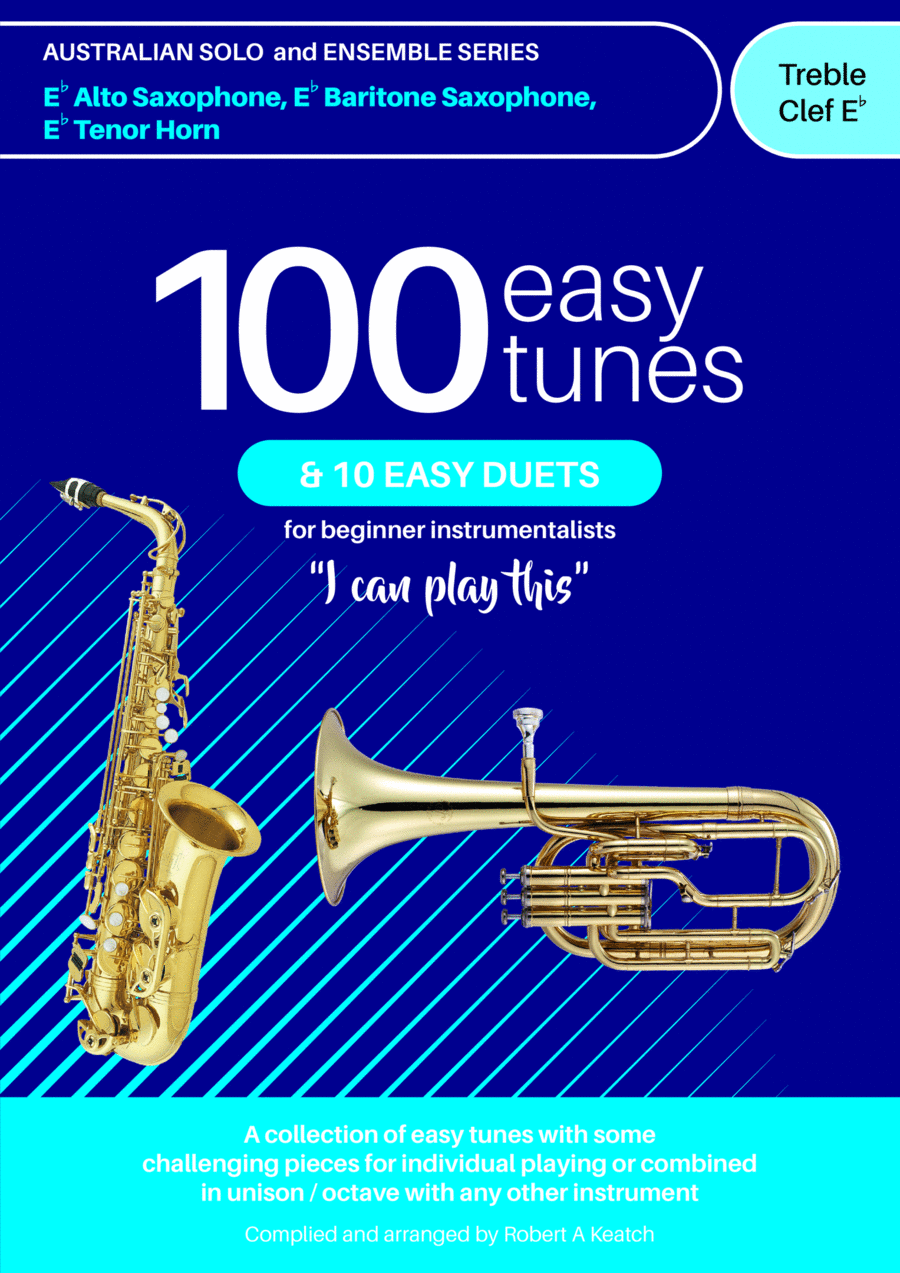Baritone Saxophone Solo - Level 2 - Digital Download SKU: A0.1107900 By Various. By Various. Arranged by Robert A KEATCH. 20th Century,Children,Christmas,Instructional,Multicultural,World. Individual part. 32 pages. PARKLAND PUBLISHING WESTERN AUSTRALIA #710515. Published by PARKLAND PUBLISHING WESTERN AUSTRALIA (A0.1107900). If you're a beginner or looking to enhance your musical skills, this book is just what you need. It features well-known tunes including For He's A Jolly Good Fellow and Happy Birthday, and is packed with an impressive collection of easy-to-learn melodies and duets that make reading and playing the TREBLE clef a breeze.The book is designed specifically for beginners, with each page containing useful teaching points, guidance notes for both teachers and students, a note value chart, the Circle of Fifths for major keys, scales, easy technical exercises, and an alphabetical index of tunes.It's perfect for teacher-student play-along. It's available in 10 different versions for all Western musical instruments, allowing for unison or octave play.ENDORSEMENTS. Professional musician Keith Walker highly recommends this book, wishing he had it 50 years ago.It's popular among Primary/elementary school instrumentalists and teachers because of its simplicity and versatility, as it can be played on any instrument.This book is a great source of inspiration and motivation for people of all ages and classrooms.It's definately an excellent resource to have!
